Faculty Spotlight: Professor Heather Mawson Encourages Community and Experimentation in Core Foundations
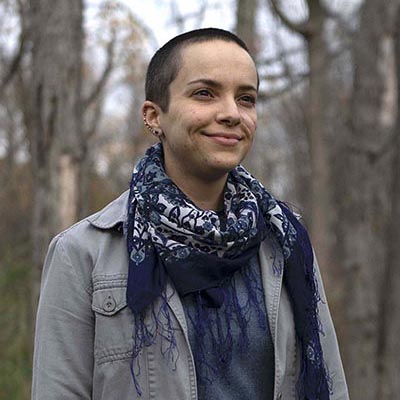 Interdisciplinary Artist Heather Mawson has joined the Art Department faculty as Assistant Professor of Teaching. Her teaching will focus on the Foundations/ Core Area, where she will share her expertise in time-based media.
Interdisciplinary Artist Heather Mawson has joined the Art Department faculty as Assistant Professor of Teaching. Her teaching will focus on the Foundations/ Core Area, where she will share her expertise in time-based media.
Mawson received her BFA (’16) in Studio Art, with a concentration in Sculpture and a minor in Ceramics, from The University of Texas at El Paso and an MFA (’18) in Sculpture from Michigan’s Cranbrook Academy of Art.
A Foundation of Fluidity
Mawson is the child of a military parent, and her experiences of living internationally on military bases has shaped her sense of self and her work. “The general question of ‘Where are you from?’ is a loaded question for me,” she explains. “I was able to live around the world, and because of that, I can’t really say that I’m from anywhere in the geographical sense. That is important for people to know about me, because this question is often used as a guiding force to see how people can connect with you or if you share something in common.”
Mawson moved to El Paso and later enrolled at The University of Texas at El Paso and began firmly establishing herself as an artist. “Studying there was an extremely beautiful experience,” she recalls. “I had amazing professors such as Vincent Burke, who was a real mentor that went above and beyond to help me see all the opportunities that were available. I also had a cohort of students that were equally engaged in their art and practice, and wanted to grow as artists.”
From there, Mawson was set on a “fluid” trajectory of artistic and personal discovery, which continued at Cranbrook. “Graduate school made me realize what I want my art to be about, who I want it to be for, and how I want to live my life.” Cranbrook’s alternative pedagogical model, which requires a great degree of self-direction in a tight-knit community, was the perfect fit, she says.
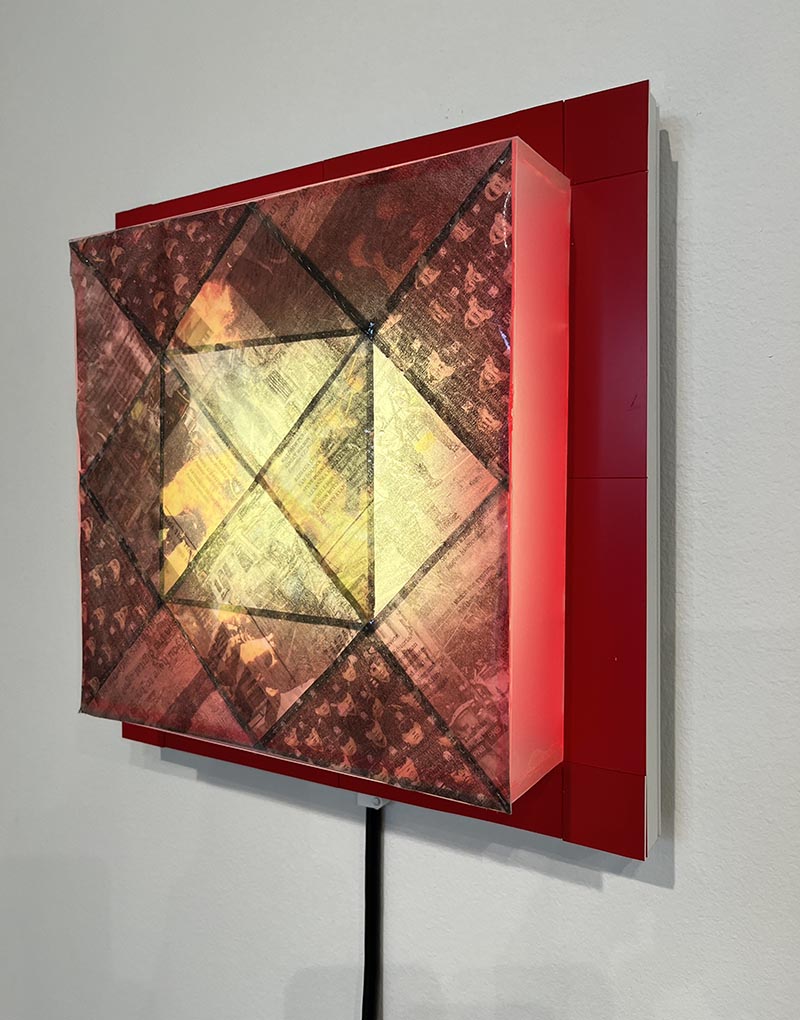
Questioning United States Ideologies
Today, Mawson investigates US cultural norms in everyday ephemera and occurrences, specifically examining the merging of consumerism and politics in mass communication, as a way to “question where the system ends and the individual begins.” She explains, “I take images, language, symbols within popular American culture and pull them apart. I can then investigate them, both within myself and to create something for viewers to question for themselves the world they are a part of in a different way.”
Growing up in a highly patriotic military household that traveled and existed within broader geographical and cultural contexts, has influenced her work. “My dad being in the military exposed me to a form of hyper-patriotism,” she says. “Yet, I was traveling the world and experiencing different cultures and seeing alternative ways that people live and the varying ways people think about the United States. That made me question why we do the things that we do — how guns and the death penalty were oddities for my Australian classmates, for example. It hit me that what was perceived as normal in the U.S. was not normal elsewhere, and it gave me this lingering sense that what we see as common is not necessarily natural. It is made up, and if it’s made up then it can change.”
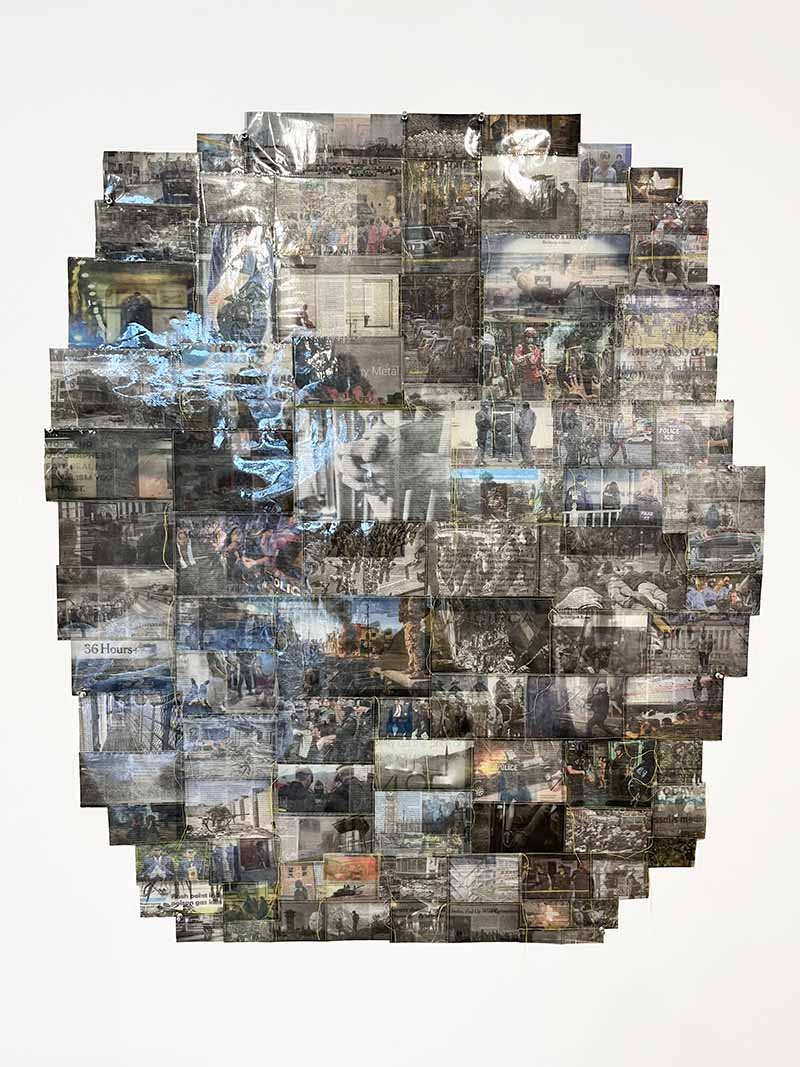
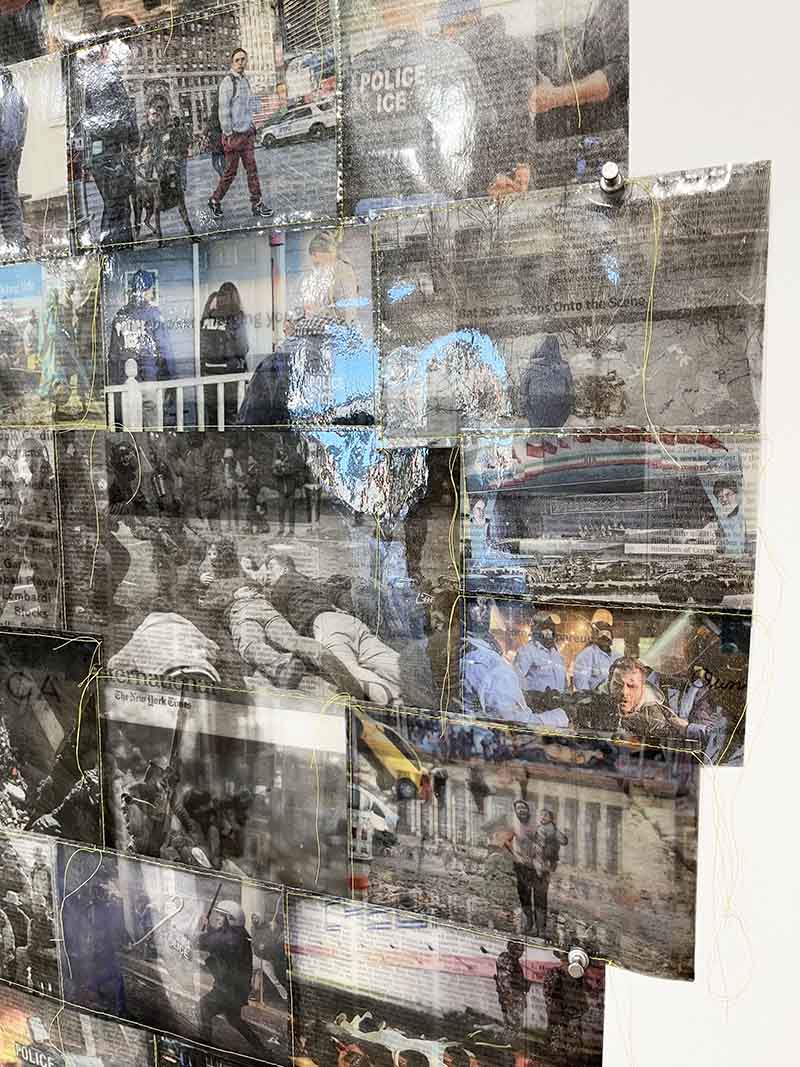
Reckoning with Participatory Art
Mawson has always been interested in the cyclical nature of participatory and socially engaged art that puts her in conversation with others. However, this kind of art making can present what she describes as “a kind of reckoning” for her as a newcomer to Detroit. She explains, “When I came here, it really didn’t seem right for me to make the kind of participatory work I had been making. I needed to reevaluate myself and my approach. It has forced me to take a deep dive into the type of work I make, who I make it for, who I am, what spaces I have a right to take up, and what spaces I don’t.”
This pause has allowed Mawson to turn inward, but with a reconfigured perspective or lens. “I’m pulling materials from everyday life and investigating them on my own terms within the studio, in order to reconfigure and analyze them, to the point where there is some kind of transformation that allows me to look at it differently within a different lens than what I took them from. If anything, my work within the city and working with other people has just added an extra lens for me.”
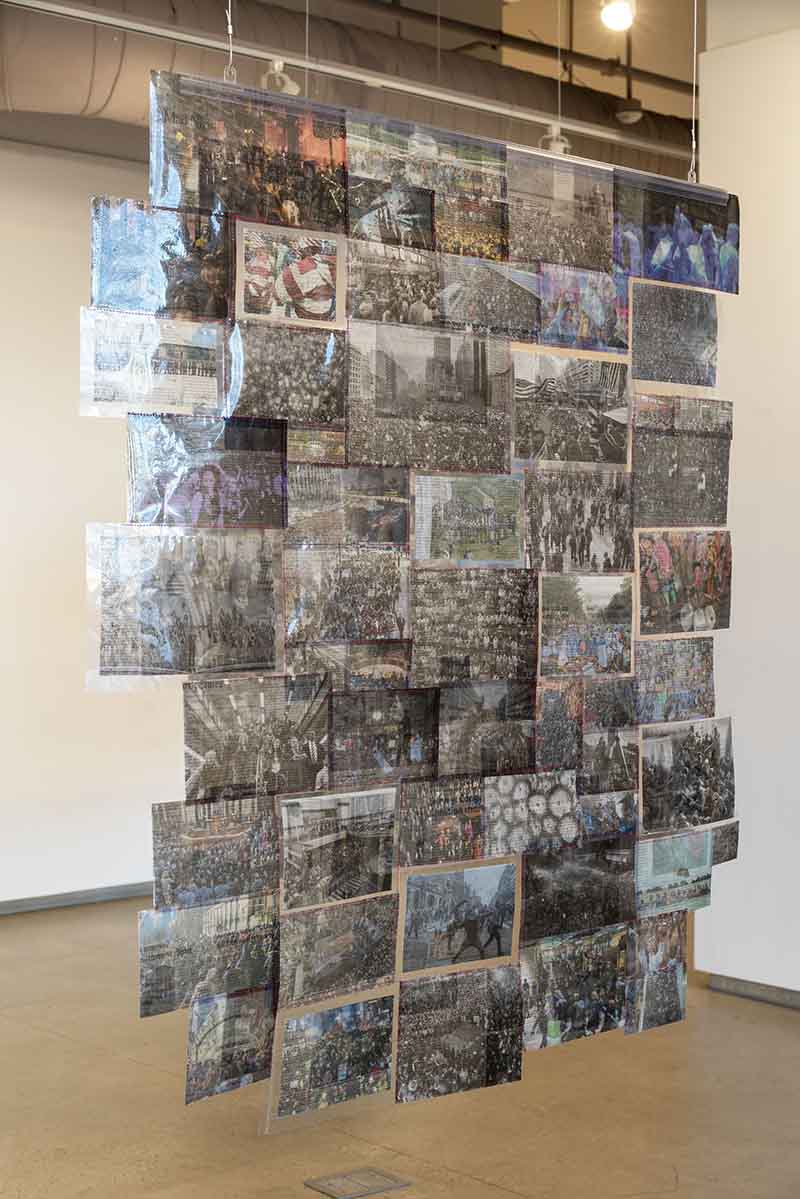
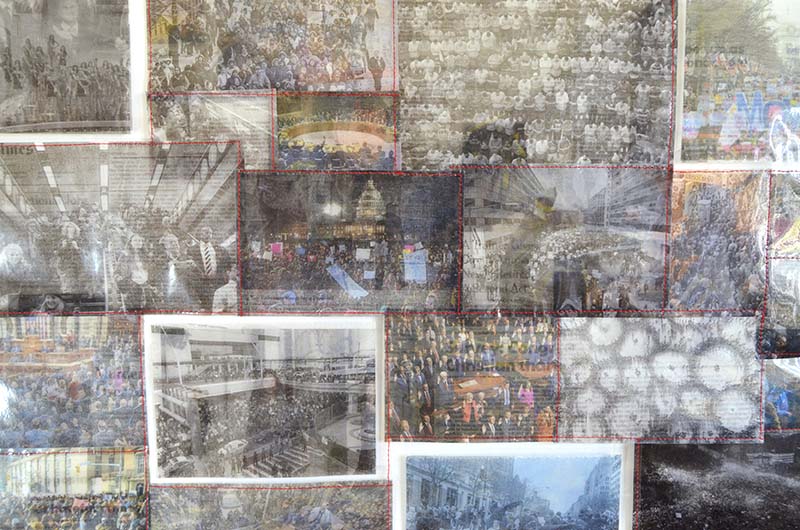
Committed to Mutual Aid
Through work with mutual aid groups, Mawson is discovering ways to bring together community and her artistic production. “Being active within a community lets there be some distance between what I’m making and how I’m actively participating within movements that I think are really important. Right now, those two aspects of my life have not coalesced — they have not threaded themselves together completely.”
Mawson appreciates that mutual aid groups are often community funded and community led. They differ from non-profit organizations in that they are funded by individuals, usually through small donations of $5-$20, and rely on volunteers. She feels that there are numerous mutual aid groups in Detroit doing great work, including Hey Y'all Detroit, Eastside Mutual Aid, Detroit Community Fridge, Michigan Mutual Aid Coalition and Hamtramck Mutual Aid.
Mawson’s main commitment is to Nox Library, a leftist, literature distribution, mutual aid group that distributes books throughout the City of Detroit. “Often it’s hard to find leftist, revolutionary books, even in libraries, which is why I got involved,” she says. Through her work with Nox Library, she connected with Swords into Plowshares Peace Center and Gallery, which focuses on peace and justice related art exhibits and community events. After Nox Library operations took a pause and helped curate an exhibition at Swords into Plowshares, she became interested in their archive and has begun photographing and digitizing their collection and archive. Mawson has also helped to launch their newly developed Artist in Residence program that started in July with artist/musician Paul Darnell.
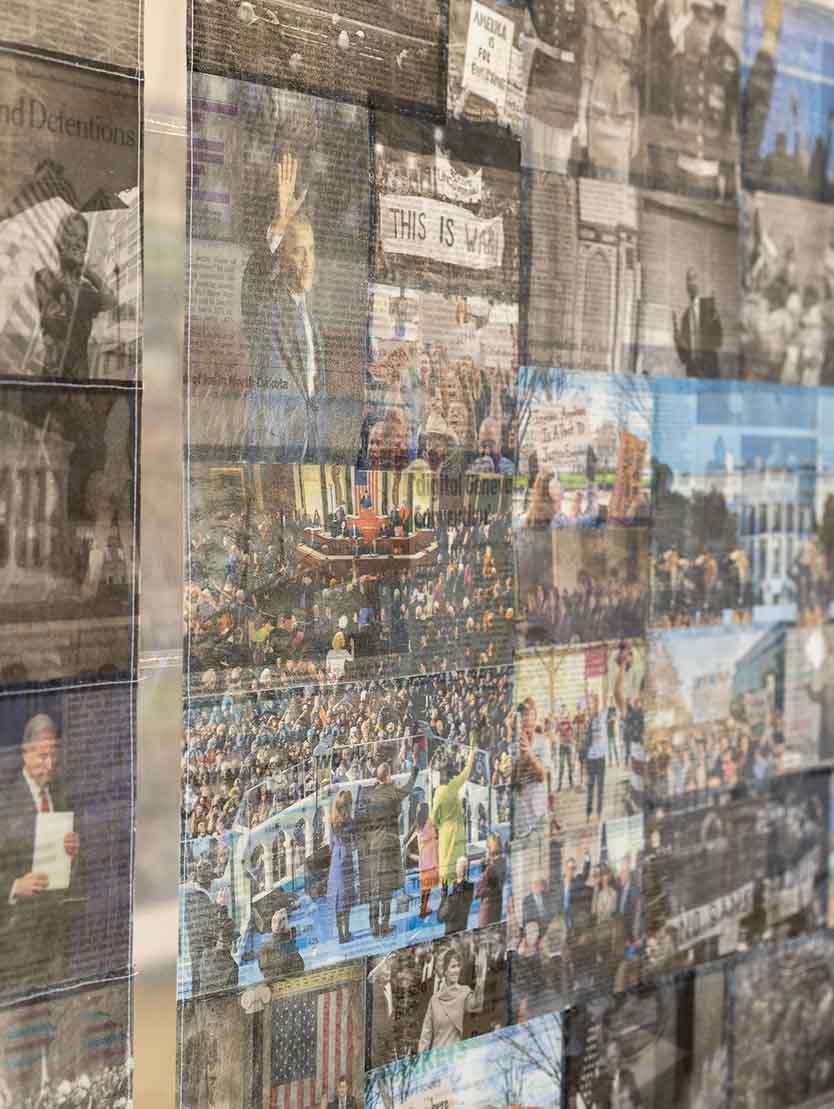
Teaching Approach: Experimentation and Community Over Mastery
Mawson views her teaching practice as existing within a large umbrella of sculpture, that also contains video art performance and social practice. Teaching the Time Studio in Core/Foundations class “is encompassing,” she says. “It is such a large area to cover, including video, art, sound art and social practice/community-engaged art. I tell students that the class is meant to be an experimental course so that they don't feel intimidated or afraid to try things out, especially when it comes to the technology. That is how they can get the most out of Time Studio while learning fundamental design principles.”
Ultimately, Mawson wants students to build confidence with transferable skills. She says that in her foundation courses, “Students are not going to learn THE thing. They’re going to learn many things that are going to give them the skills, processes and best practices to set themselves up for whatever they pursue and whatever situation they find themselves in. That’s the most important thing.”
Mawson also wants her students to see the classroom as a participatory experience, which leads to student success. “I see that students have some social anxiety,” she says. “I try to create an environment where they can start with casual conversations that they build into friendships. Then they want to see each other every week, they come to class more, and develop a sense of commitment.” One assignment asks students to create a project around food within a community that they are a part of (under the socially engaged art module). “It feels right to be able to create that, so that they can have pride in whatever that community is and feel like it is important and that they belong to something.” Mawson also believes that inquisitiveness is critical … and reciprocal. “I always ask a lot of questions of students, and I’m hoping that they continue asking questions within themselves about their work. I think that’s really important.”
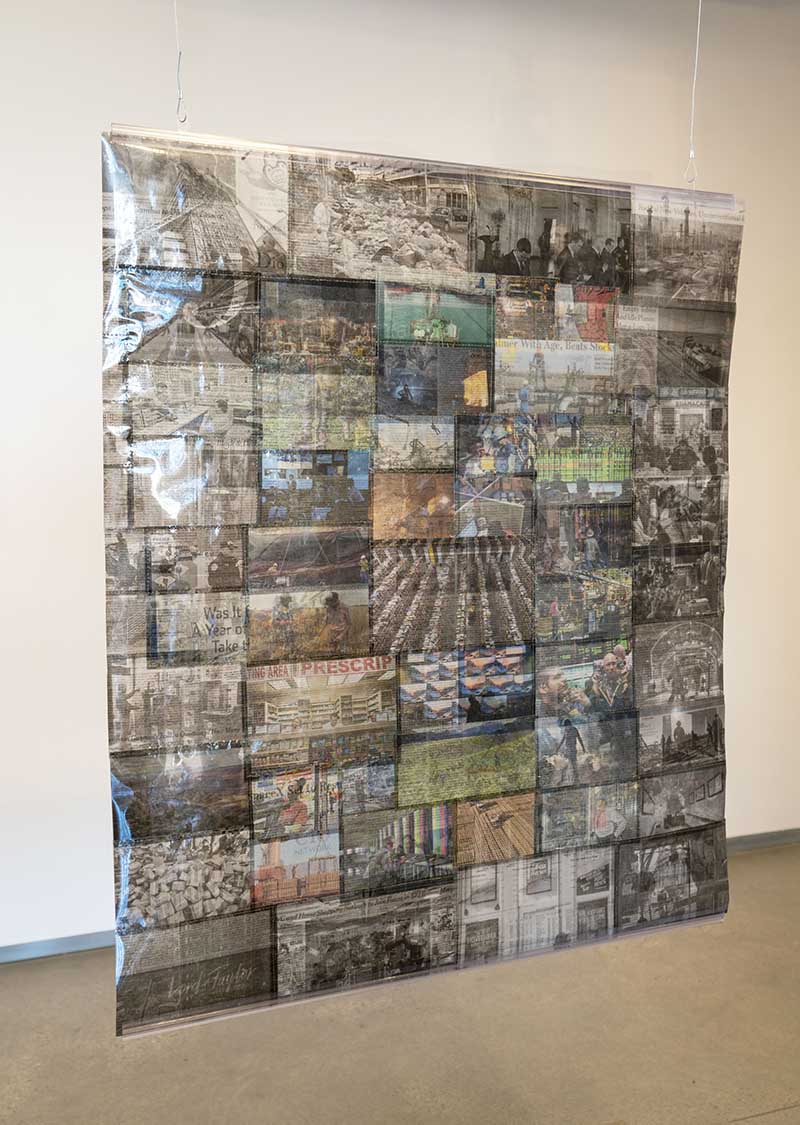
Creating Opportunities for Participatory Digital Art in Detroit
Teaching at WSU, Mawson sees parallels to The University of Texas in El Paso. “Both schools are on borders. They both serve underrepresented students within the United States. And they both have really great programs to help first generation students,” she says. With this understanding, she sees the opportunity for WSU to do more when it comes to social practice. “My undergraduate experience was more traditional, in the sense that there wasn’t a space for me to explore performance or social practice work,” she says. “I didn’t know those things were even possible until I had a professor, Jessica Pizana-Roberts, join the faculty in my sophomore year who created a course like that. Then I realized that there was this whole other area of work that I didn’t know existed. It seems like a disadvantage to not have this here, because Detroit is so active within that type of art making. I think there’s a huge opportunity to create those kinds of courses. That’s what I’m hoping to help create.”
Links:
www.heathermawson.com
www.swordsintoplowsharesdetroit.org
www.noxlibrary.org